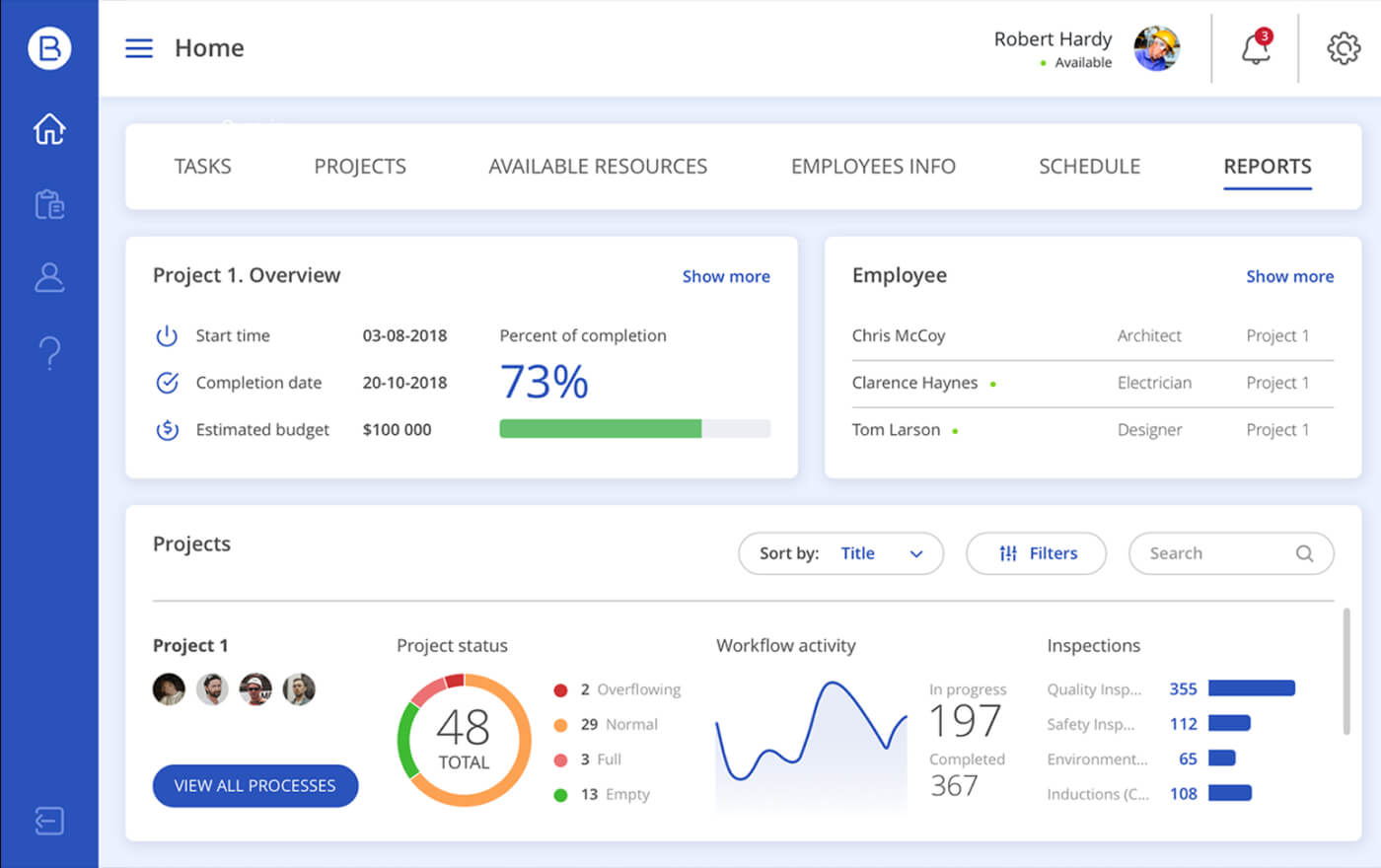Evolve Construction: Leading the Way in Construction Innovation
Wiki Article
Tailored Building And Construction Administration Software Application: Optimizing Resource Allocation and Budgeting Techniques
In the world of modern-day construction administration, the relevance of customized software application remedies can not be overemphasized. These sophisticated tools provide a nuanced technique to enhancing resource allocation and budgeting strategies, crucial parts for successful task implementation. By diving right into the intricacies of how such software program can enhance resource allotment techniques and improve budget plan optimization techniques, a clear path towards increased job performance arises. In this digital age where precision and efficiency power supreme, exploring the influence of tailored building and construction administration software program on these important elements reveals a world of opportunities that can form the future of the industry.Benefits of Tailored Software Application Solutions
Customized software program remedies use a myriad of benefits to building management firms looking for to enhance efficiency and enhance procedures. By customizing software application remedies to address task monitoring, scheduling, budgeting, and resource appropriation, companies can enhance their workflows and achieve higher efficiency.One more benefit of customized software application remedies is the capacity to supply real-time insights and analytics. Building and construction administration firms can utilize data-driven decision-making to keep track of project progress, identify bottlenecks, and make changes immediately. This proactive method boosts job results and helps companies stay on track with timelines and budget plans.

Boosted Resource Allotment Methods
Carrying out efficient resource allowance approaches is critical for building and construction monitoring firms to optimize project end results and maximize efficiency. By leveraging building management software that provides real-time tracking and reporting attributes, firms can dynamically readjust appropriations as job needs evolve, leading to boosted effectiveness and cost-effectiveness. evolve construction.Furthermore, boosted source allotment methods make it possible for building and construction companies to recognize and resolve prospective bottlenecks or source restrictions proactively. By conducting routine assessments of source usage and efficiency metrics, managers can make data-driven decisions to rearrange resources successfully and stop delays. This proactive method not only boosts job timelines yet likewise minimizes the danger of budget overruns because of inefficient resource appropriation.
Spending Plan Optimization Strategies
To achieve optimum financial effectiveness in construction jobs, reliable budget optimization strategies play a pivotal function in making certain cost control and job success. One key method is the facility of a detailed job budget plan that allocates resources based upon priority and vital demands. By clearly defining the range of job, establishing reasonable expense price quotes, and continuously tracking costs, building and construction evolve construction managers can recognize possible price overruns early on and take restorative actions. Furthermore, applying worth design practices can help improve job expenses without endangering quality. This involves evaluating each job element to determine opportunities for cost savings while preserving performance standards. Leveraging historic information and market criteria enables construction supervisors to make educated decisions concerning spending plan appropriations and determine areas where costs can be enhanced. By incorporating these spending plan optimization strategies into construction management software program, job stakeholders can improve financial preparation, resource allocation, and general budget monitoring to drive job success and success.
Influence on Project Performance
Optimizing building administration software can substantially improve job performance by simplifying communication, enhancing collaboration, and assisting in data-driven decision-making. By systematizing job details, stakeholders can quickly access real-time updates, decreasing delays brought on by miscommunication or outdated data. Boosted partnership attributes enable team participants to collaborate effortlessly, despite their physical location, promoting an extra cohesive and productive job environment. Furthermore, construction management software can provide useful understandings via data analytics, allowing job supervisors to make enlightened choices quickly and accurately.Additionally, the automation of routine jobs such as organizing, budget tracking, and source appropriation can maximize useful time for project teams to concentrate on important tasks, eventually accelerating project distribution. The capacity to keep an eye on job progression in real-time and identify prospective traffic jams allows aggressive analytic, stopping problems from escalating and creating delays. In general, the influence of customized building management software program on job performance is indisputable, offering a competitive benefit by maximizing process and optimizing efficiency.
Future Trends in Building Software Application
As the construction sector continues to advance, improvements in technology are forming the future landscape of construction software program services. One substantial trend imminent is the enhancing assimilation of synthetic knowledge (AI) and machine discovering capabilities in building software application. These technologies have the prospective to change exactly how building and construction projects are handled by making it possible for predictive analytics, automated decision-making processes, and boosted project insights.One more future fad in construction software application is the expanding emphasis on cloud-based services. Cloud innovation supplies increased versatility, scalability, and access for construction teams, enabling real-time cooperation and data sharing across job stakeholders. This change in the direction of cloud-based software program is anticipated to enhance project effectiveness, enhance interaction, and boost total project outcomes.
Additionally, the increase of Building Info Modeling (BIM) is anticipated to proceed forming the construction software landscape. BIM software helps with 3D modeling, visualization, and data management, resulting in improved job sychronisation, decreased errors, and improved project outcomes. Embracing these future trends in construction software program will certainly be critical for firms aiming to stay competitive and drive development in the industry.
Conclusion
Finally, customized building management software program uses various advantages such as improved resource appropriation techniques and budget optimization strategies. This software application has a significant influence on job effectiveness by improving processes and improving general performance (construction project management software). As innovation remains to development, future trends in building and construction software are anticipated to further maximize resource allowance and budgeting strategies for building projectsReport this wiki page